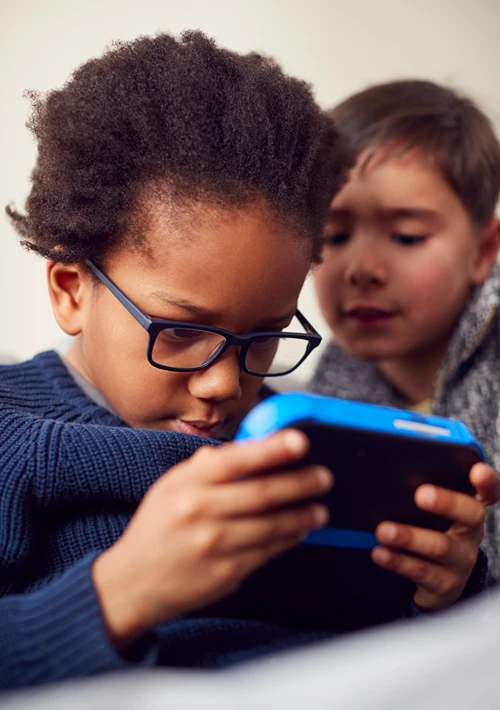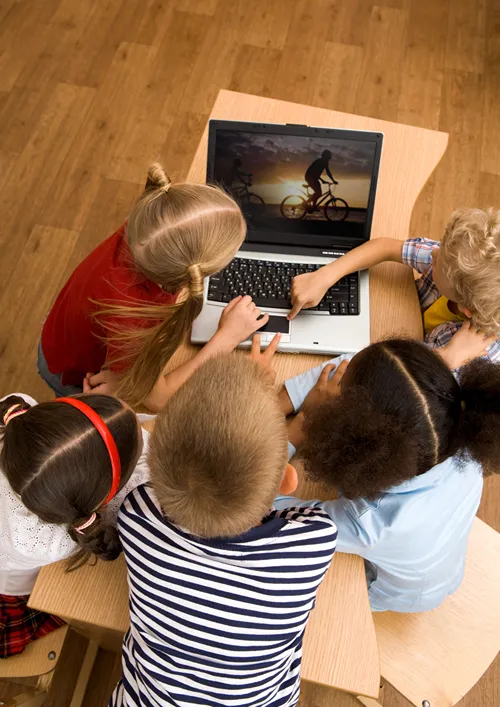Simple Hygiene Hacks Every Parent Needs for a Healthier Home
No one warns you how messy parenthood gets – until the baby toys, sticky counters, and sneezy toddlers start piling up. It’s not just about clutter anymore. It’s about keeping your home safe, healthy, and ready for everything from diaper blowouts to surprise flu bugs.
These aren’t complicated routines or expensive gadgets. They’re easy, everyday habits that help reduce germs and protect your kids. Cleaning feels manageable, even when you’re running on two hours of sleep.
Today, you’ll learn how to turn handwashing into a habit, clean toys without harsh chemicals, build fast cleaning routines, and teach kids hygiene skills they’ll use for life. You’ll also get safety tips, product swaps, and a printable routine you can start using today.
Why Home Hygiene Matters More Than Ever
Kids explore everything. They crawl, touch, lick, and share without a second thought – and that makes your home the first line of defense against germs. When you’re juggling naps, school runs, meals, and maybe a toddler meltdown or two, it feels impossible to keep things clean.
But ignoring small hygiene habits leads to bigger problems. Sniffles spread to the whole family, endless messes, and the stress of always playing catch-up.
Parents want to protect their kids. They want to feel proud of the space they’ve created. And more than anything, they want peace of mind knowing their home is a safe, healthy place to grow. That’s where simple hygiene hacks come in.
7 Hygiene Problems Every Parent Faces
Even the most caring parents feel overwhelmed by home hygiene. If it feels like no matter how much you wipe, scrub, or chase your toddler around with a toothbrush, you’re still falling behind, you’re not alone. Here’s why it happens, and how to fix it fast:
- Kids refuse to brush or wash their hands: You remind them. You sing songs. Still, they run off with sticky fingers and unbrushed teeth. This leads to more germs, more colds, and more frustration. Make it fun with sticker charts, timers, and foaming soap that they want to use.
- Toys and surfaces harbor unseen germs: They look clean… but they aren’t. Shared toys, remotes, and high-touch spots spread illness quietly. Use vinegar spray on hard toys and throw soft toys in the laundry weekly.
- You’re too tired to clean every night: After dinner, baths, and bedtime, who has energy left to scrub the counters? Try a 5-minute evening wipe-down. One cloth. One spray bottle. That’s it.
- Every expert says something different: You Google “how to clean safely” and get 10 different answers. Confusion leads to inaction. Start with proven, parent-tested routines and ignore the noise.
- Harsh chemicals feel unsafe: Bleach near a baby’s crib? No thanks. The fear of using toxic products can stop you from cleaning at all. Swap them out for kid-safe DIY cleaners using vinegar, baking soda, and lemon.
- Pet fur and kids make a messy combo: Fur on toys, paws on floors, and kids rolling everywhere. It feels unmanageable. Vacuum with HEPA filters and wipe paws with pet-safe cloths at the door.
- You can’t track who’s done what: Which kid washed their hands? Whose toothbrush is whose? Hygiene falls apart without clear routines. Label personal items and use a daily chart to keep everyone on track.
Simple Hygiene Hacks That Actually Work
A clean, healthy home doesn’t need to take hours or cost a fortune. What works best for parents is fast, simple, and safe for kids. These hygiene hacks combine fun routines with gentle tools, so you can keep things clean without the stress. Each one solves a real problem while making your day easier.
Turn Handwashing Into a Game
Getting kids to wash their hands shouldn’t feel like a wrestling match. When it becomes a playful part of the day, they stop resisting and start remembering. One of the easiest ways to do that is with a 20-second song they love. If it’s a silly jingle or a chorus from their favorite show, singing helps them learn how long to scrub while having fun at the sink.
Add a sticker chart near the bathroom to track their wins. Each time they wash properly, they earn a sticker – and you get one less thing to worry about. Foaming soap in bright colors or fruity scents also makes a big difference. It’s easier to use, gentler on tiny hands, and turns a boring routine into a sensory game they look forward to.
You don’t need reminders or arguments when the routine feels like play. With just a few small changes, handwashing becomes a habit that sticks – for good.
Clean Toys Without Harsh Chemicals
Toys go everywhere – floors, mouths, the backseat of the car. And they carry germs you can’t always see. But scrubbing every toy with store-bought disinfectants isn’t just exhausting. It also raises concerns about harsh ingredients around little ones. You need a safer, easier way to keep toys clean without adding stress to your day.
For hard plastic toys, mix equal parts white vinegar and water in a spray bottle. Give each toy a quick spritz and wipe them down with a clean cloth. It’s gentle, natural, and still effective against most everyday germs. Plus, you don’t have to worry if a toy goes straight back into your child’s hands.
Soft toys can be tossed in a laundry-safe mesh bag and washed on a gentle cycle. Let them air-dry in the sun when possible – it helps kill bacteria and leaves everything smelling fresh. No scrubbing. No chemical fumes. Just clean toys and peace of mind.
Create a “Shoe-Free” Zone
Shoes pick up everything – from street grime and playground dirt to invisible germs. Each step inside brings that mess onto your floors, where babies crawl and kids play. That’s why setting up a shoe-free zone by the door is one of the simplest ways to protect your home.
Place a shoe basket or small shelf near every main entrance. Add a mat where guests and kids can sit to remove their shoes and keep clean slippers or socks nearby. The habit forms quickly, especially when kids see everyone else doing it.
This one change stops outdoor bacteria and allergens from traveling through your home. Your floors stay cleaner, your air feels fresher, and your cleaning routine becomes a lot more manageable – all without lifting a mop.
5 Minute Nightly Wipe Routine
By the end of the day, the last thing you want is another chore, but a quick wipe-down takes less time than scrolling through your phone and makes a big difference.
Germs love high-touch spots like doorknobs, remotes, light switches, and kitchen tables. Cleaning them takes five minutes or less and helps stop sickness before it starts.
Keep a spray bottle filled with vinegar and water somewhere handy, along with a microfiber cloth or a set of reusable dishcloths. After the kids are asleep, do a quick pass over the most-used surfaces – door handles, tabletops, bathroom taps, and electronics. There’s no need for scrubbing or harsh products. Just a few gentle swipes give you a clean start for the next day.
This tiny routine keeps germs under control, reduces next-day messes, and helps you feel back in charge – even on the busiest nights.
Make Brushing Fun and Foolproof
Toothbrushing battles are part of parenting life. Kids squirm, stall, or say “no” for the third time in five minutes – and you’re left feeling drained. The secret isn’t more reminders. It’s making brushing something they actually want to do.
Try using a toothbrush timer or a short video that features their favorite characters brushing. Kids naturally copy what they see, and the visual guide helps them learn proper technique without constant corrections. You can also make it a shared moment by brushing alongside them.
Give them some control, too. Let them pick a fruity toothpaste flavor they like – bubblegum, strawberry, even watermelon. The fun colors and taste can turn a boring chore into a small highlight of their day. And for extra help, this simple brushing teeth guide offers tips that work at every age. When brushing feels like their choice, not your rule, it’s much easier to stick with.
Go Bag for Public Outings
You’re out running errands, and suddenly your child sneezes, drops a snack, or grabs something sticky. Moments like that can turn a smooth outing into a stressful one – unless you’re prepared.
That’s why every parent needs a hygiene “go bag.” It doesn’t have to be fancy. Just tuck a few essentials – baby wipes, hand sanitizer, tissues, and maybe a spare mask – into a small pouch. Keep it clipped to your stroller, inside your diaper bag, or in the car door pocket.
When things get messy (and they always do), you won’t have to scramble. You’ll have what you need to clean hands, wipe faces, or handle the unexpected with calm and confidence. It’s one of those tiny setups that makes a huge difference when you’re juggling kids, carts, and public spaces.
Label Towels, Cups, and Brushes
In a busy household, it’s easy for things to get mixed up, especially when you have multiple kids. One child’s toothbrush ends up in the wrong holder. Someone grabs the nearest towel. Cups switch spots on the counter. It may seem harmless, but those small mix-ups can spread germs quickly, especially during cold and flu season.
A simple solution is to label personal items. Keep them in designated spots: hooks for towels, separate toothbrush holders, or labeled cubbies for water bottles.
This small habit cuts down the risk of cross-contamination and teaches kids to take ownership of their hygiene. They’ll know which items are theirs and why it matters. Plus, it reduces your mental load – no more guessing or reminding. Everyone has what they need, where they expect it, and you get a cleaner, safer routine in return.
Natural Cleaning Without Worry
When you have little ones crawling on floors and touching everything, the last thing you want is harsh chemical residue lingering around the house. Many store-bought cleaners get the job done, but they can be too strong for young lungs and sensitive skin.
That’s why more parents are switching to safe, natural alternatives. A simple mix of vinegar and water works well on counters, highchairs, and toys. Add a squeeze of lemon for a fresh scent and extra cleaning power. Baking soda is great for scrubbing sinks, tubs, and sticky messes without scratching surfaces.
Use microfiber cloths and spray bottles to make cleaning quick and effective. They grab dust, lift dirt, and don’t leave behind harmful residue. Just as important – know what to skip. Avoid ammonia, bleach, and strong disinfectants near babies or in areas where kids play.
With a few safe ingredients and the right tools, you can keep your home clean, and your family protected, without the worry.
Make Hygiene Stick with Kids
Getting kids to follow hygiene routines isn’t just about telling them what to do – it’s about showing them how and making it fun. When these habits become part of their daily rhythm, they turn into lifelong routines that feel natural and rewarding.
Visual charts are a great place to start. Create a simple morning or bedtime chart with pictures for brushing teeth, washing hands, and using tissues. Each time they complete a task, they can place a sticker or check a box. It gives them a sense of progress and builds pride in doing things on their own.
Add music to the mix. Hygiene-themed songs turn brushing or handwashing into something playful and easy to remember. A silly tune or beat makes those two minutes at the sink fly by.
Most of all, kids copy what they see. When they watch you model healthy routines, they absorb the message naturally. These pediatric tips for teaching hygiene routines offer even more ways to encourage consistency and confidence. With a few creative tools and steady support, hygiene can become second nature for them and for you.
Ready-to-Go Hygiene Routine for Busy Families
When life gets hectic, routines are the first to fall apart. That’s why having a ready-made hygiene routine helps bring structure without extra thinking. You don’t need a long checklist – just a few key tasks that fit into your day.
Start with a simple 3-step routine for toddlers: wash hands before meals, brush teeth after breakfast and before bed, and wipe down toys at the end of the day. These small habits lay the foundation for bigger ones as your child grows.
For parents, a quick morning wipe of high-touch spots and a 5-minute evening clean-up can make a huge difference. No stress. No overthinking.
To make it easier, grab the free printable hygiene checklist and hang it where the whole family can see. It’s clear, colorful, and built for real life. One glance keeps everyone on track – even on your busiest days.
Final Thoughts
You don’t need to do everything at once. Some days will be messy, and that’s okay. What matters is creating small, healthy habits that make your home feel safe, and your parenting feel a little lighter.
Each time you wipe a toy, sing a brushing song, or stick to a routine, you’re building something bigger – peace of mind, better health, and more bonding moments with your kids.
If one of these tips helped you today, pass it on. Share it with a friend or post your favorite on social media to help another parent breathe a little easier.









